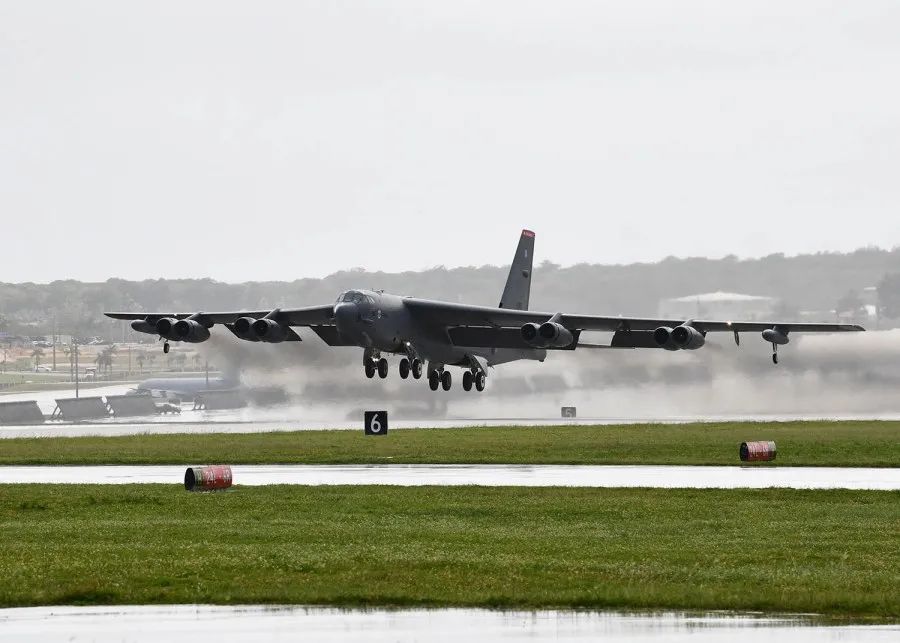The U.S. Navy aircraft carrier will enter “ghost-in-the-world” mode from 2019 to prevent “adversaries such as China and Russia from figuring out the whereabouts of U.S. aircraft carriers.” Now, the U.S. Air Force’s strategic bombers are adopting a similar approach, playing hide-and-seek with China and Russia. The U.S. B-52 strategic bomber recently completed a “milestone”-style supersonic missile rapid strike demonstration, the Star-Spangled Banner said Monday. “The unpredictability of this operation across North America will put china, Russia and other adversaries at war.”
Reported that the U.S. Air Force said on May 10, the simulation exercise on May 5 in Alaska,” “Northern Blade-21” exercise. Participation in the joint training exercises includes the United States Air Force, Army, Navy and Marine Corps four major military types, the importance of the attention can be seen. As part of a field-wide combat capability test, a B-52 strategic bomber took off from Barksdale Air Force Base in Louisiana and headed north for Alaska, the report said. During the flight, the bomber received target data from sensors 1,000 nautical miles from the Elmendorf base in southern Alaska. The bomber then successfully simulated a target from 600 nautical miles using the AGM-183A Air-launched Rapid Response Weapon (ARRW). “This is a successful demonstration of the use of the over-the-horizon kill chain, especially in a highly confrontational and realistic threat environment provided by the ‘Northern Blade’ exercise”. After completing the missile simulation launch, the B-52 returned and landed in Barksdale, a process that took 13 hours.
The AGM-183A, developed by Lockheed Martin, is a booster glider hypersonic missile under test and has not actually been tested so far, the report said. In April, the missile’s first free-flight test failed due to a malfunction during launch. But the U.S. Air Force still wants the missile to be the first hypersonic weapon to be equipped with troops.
According to reports, the AGM-183A has a range of 869 nautical miles, so “the ability to detect and target opponents from a distance is very important to give full play to the characteristics of hypersonic missiles.” In addition, the exercise is an important exercise for the U.S. Air Force to combine aircraft and sensors as part of the future Advanced Combat Management System (The Future Battlefield Network).
The report also mentions that as part of a relatively new strategy( the so-called “dynamic force deployment”), the U.S. Air Force is deploying strategic bombers in the U.S. and requires them to conduct unpredictable long-range flights anywhere in the world in a short period of time. According to the U.S. Air Force, “the unpredictability of the strategy will keep adversaries such as China and Russia at war.” Starting in 2020, the U.S. Strategic Bomber Force in Guam has ended a 16-year fixed-cycle deployment and replaced it with an irregular rotation to increase “unpredictability in the Pacific war zone.”
Is it just that this kind of operation can really be as effective as the U.S. military envisions? Experts interviewed by the Global Times said it would be difficult for both aircraft carriers and strategic bombers to escape their opponents’ surveillance by tactical maneuvering, using existing reconnaissance techniques. In fact, such actions by U.S. bombers increase the likely outbreak of accidental conflict. The U.S. Forbes website warned on the 11th, nuclear capability of the United States strategic bombers frequently involved in regional conflicts, it is likely to lead to the opponent’s miscalculation of nuclear war.
Although the United States claims to be “behind China and Russia in hypersonic missiles”, but Chinese military expert Zhang Xuefeng 12, warned that from the U. S. military’s existing technical means, the use of AGM-183A such hypersonic missiles to achieve long-range rapid strike, may be easier than conventional air-launched cruise missiles. In his view, the AGM-183A may be guided using mid-segment inertia, GPS, astronomical navigation, and data chain command correction, and at the end, GPS-plus radar imaging or infrared imaging guidance. The medium-range guidance of traditional air-launched cruise missiles requires relatively complex route planning. Mr Zhang said the AGM-183A could be used more to attack time-sensitive targets such as mobile targets, which are launched after receiving data in the air. It also involves damage assessment and re-attack, which is what the U.S. multi-military joint exercise is all about.



